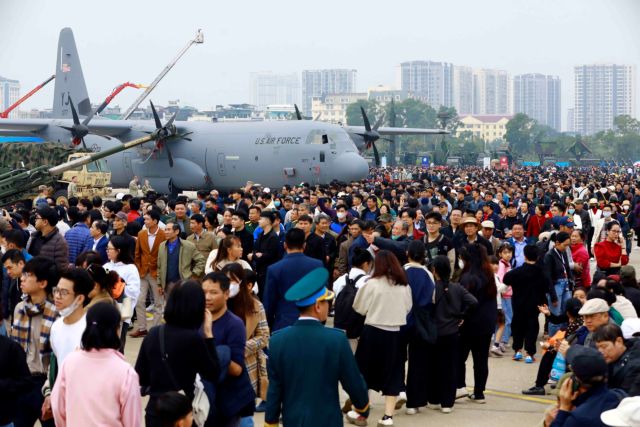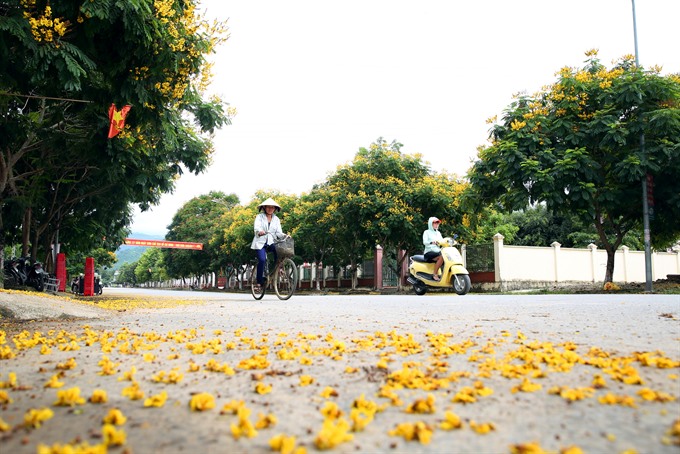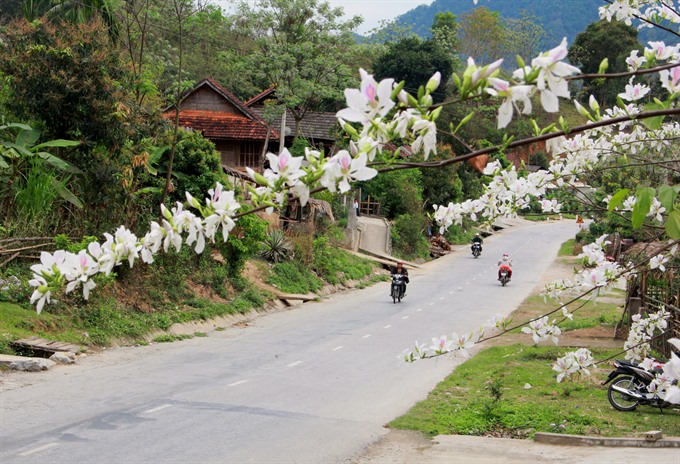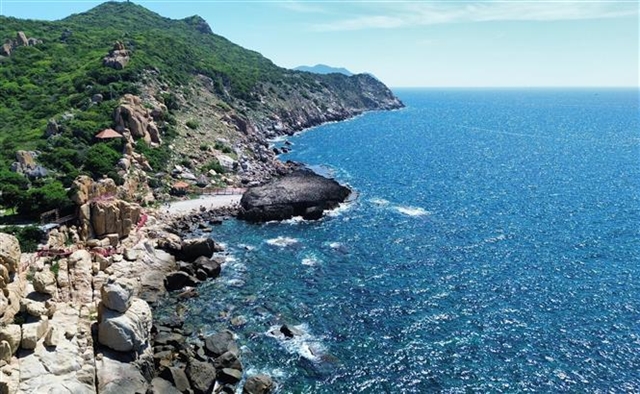 Life & Style
Life & Style

The 200km route from Quế Phong to Kỳ Sơn districts is regarded as the most beautiful route in Nghệ An. The drive takes one past scenic mountainscapes, refreshing rice terrace fields and colourful flower forests.
141111124AM.JPG) |
| Open road: The low volume of traffic gives drivers such a sense of calm and serenity when driving in this route. |
by Hồ Phương
The 200km route from Quế Phong to Kỳ Sơn districts is regarded as the most beautiful route in Nghệ An. The drive takes one past scenic mountainscapes, refreshing rice terrace fields and colourful flower forests.
As a journalist based in Nghệ An, I have been to this area hundred times in the last five years, but this is the first time I took a road trip across the entire route.
745114458AM.JPG) |
| Journey: The 200km route from Quế Phong to Kỳ Sơn districts is regarded as the most beautiful route of Nghệ An. — VNS Photos Hồ Phương |
The route stretches over the three districts of Quế Phong, Kỳ Sơn and Tương Dương, which are among the poorest localities of the country. Each of its villages that I pass by, however, has vibrant and lively colours and gives me a sense of serenity that I can never find in the hustle and bustle of city life.
Our starting point is Tri Lễ Commune in Quế Phong District, one of the border communes that has become known for its rice production in the west of Nghệ An for hundreds of years.
127114453AM.JPG) |
| Hardscrabble: Quế Phong District is among the poorest localities of the country. |
Rain had just helped to cool the area off, and the exhaustion of the heat waves that had recently produced temperatures of up to 40 degrees Celsius seemed to disappear when we arrived.
The weather in this commune changes very quickly. Locals said that two days ago, it was scorching. But the rains had made the temperature drop quickly.
Rain also makes the rice terraced fields look fresher and greener. The scent of young rice seems to linger in the air, creating such a pleasant feeling for us.
 |
| Colourful: A road in Kìm Sơn town is covered with yellow flowers. |
Every time I pass by this area, I am reminded of the story of Vi Phúc, a native of Môn Sơn Commune, about the origins of this area. He said Tri Lễ used to be a place where families of the Thái ethnic group stopped on their journey of migrating from the northwestern and western area of neighbouring
Nowadays Tri Lễ is one of the most culturally diverse places of Quế Phong District because it is home to three ethnic tribes: the Thái, Mông and Khơ mú.
It took more than an hour for us to travel throughout Tri Lễ by motorbike.
Summer is the time when the bamboo forests along the two sides of the road start to blossom. Bamboo blossoms only once before it dies. Therefore, these are considered the most glorious days of the bamboo tree’s life and this trip was among the few times I’ve had the chance to witness it.
 |
| Fragrant: Flower blossoms in Tương Dương District. |
After Tri Lễ, we arrived in Nhôn Mai Commune of Tương Dương. The curving road bends along the tranquil mountain ranges, leading us to a seemingly deserted land. Rarely do we encounter a rider travel on the opposite side. The mountain and forest are tranquil but not monotonous. This is the time when the local săng lẻ trees change their leaves. The whole area turns red and just a breeze is enough for the leaves to drop off the branch. Yet in one month, after some summer rains, the buds will spring up.
147114430AM.JPG) |
| Twists and turns: The curving road is characteristic of mountainous areas in Việt Nam. |
This road makes it a lot easier for one to travel to remote areas like the ethnic village Na Hỉ - which looks like a greenish, tranquil painting. The small stilt houses on two sides of the village road look like they are deeply carved into the mountain. Near them stand the glorious terraced rice fields.
The road then leads us to Nhôn Mai, Mai Sơn of Tương Dương District and then Mỹ Lý, Huồi Tụ. Tà Cạ Commune of Kỳ Sơn is our last destination on Highway 16.
The colourful journey to the remote ethnic villages helped me a lot in coping with the stress and pressure of daily life. Each twist of the road was an exciting window into a new natural landscape – the road carpeted with red leaves in Xốp Tụ or the pure white flowers on the Pha Bun mountain range. — VNS









